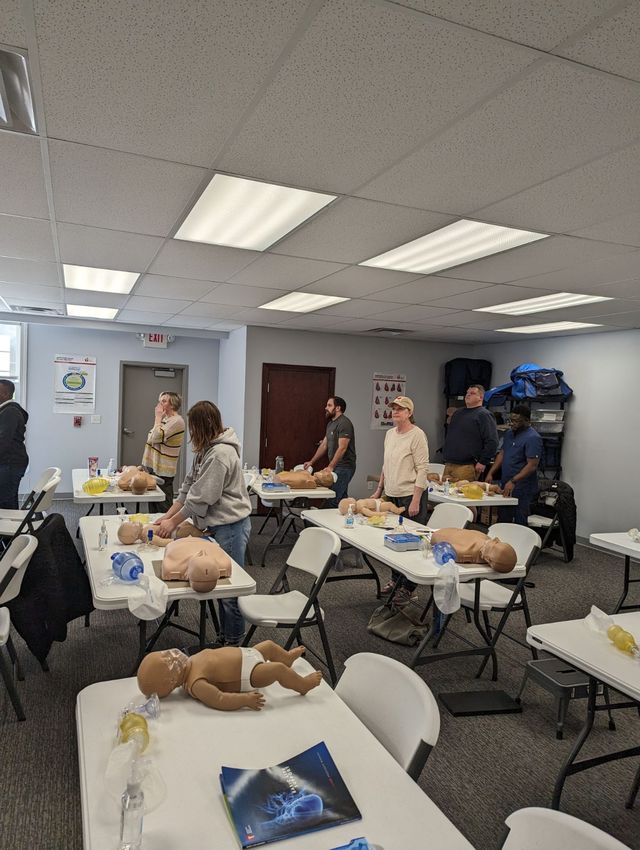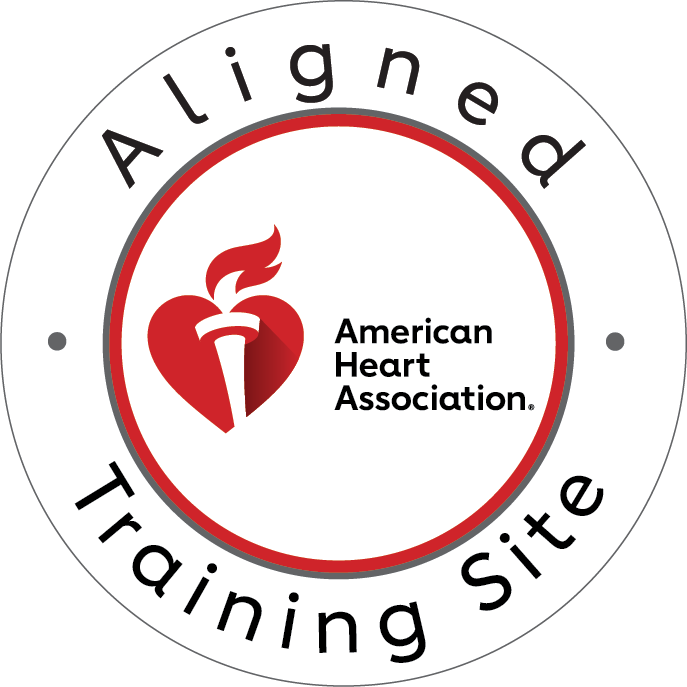In the critical moments following cardiac arrest, every intervention that can enhance blood flow to vital organs matters. One such innovation that has transformed emergency cardiovascular care is the Impedance Threshold Device (ITD). These specialized tools have become increasingly significant in cardiopulmonary resuscitation (CPR) protocols across emergency medical services (EMS) systems nationwide. This article explores how ITDs work to improve cardiac output during CPR, their proper implementation, and their potential to enhance survival outcomes.
What Is an ITD Device?
An Impedance Threshold Device is a small, valve-like apparatus designed to regulate airflow during CPR. Approximately the size of a standard fist, the ITD connects between the ventilation device (like a bag-valve mask or advanced airway) and the patient. Its primary function centers on a sophisticated yet elegantly simple mechanism: it selectively restricts airflow during the decompression phase of chest compressions.
The ITD contains a silicone diaphragm that serves as a one-way valve. This valve remains closed during the chest recoil phase of CPR, preventing air from passively entering the lungs. By creating this temporary vacuum within the thoracic cavity, the ITD enhances negative intrathoracic pressure, which ultimately improves blood return to the heart between compressions.
Modern ITDs also feature pressure-sensing capabilities and timing mechanisms to ensure optimal synchronization with chest compressions. This technological sophistication allows the device to automatically adjust its functionality based on the specific resuscitation parameters being applied.
The Role of ITDs in EMS Systems
In emergency medical services, the ITD has evolved from an experimental tool to a standardized component in many advanced cardiac life support protocols. EMS professionals typically encounter ITDs as part of their CPR equipment arsenal, with specific models designed for prehospital settings that prioritize durability, ease of application, and effectiveness under challenging field conditions.
The integration of ITDs into EMS systems reflects a growing emphasis on perfusion-centered resuscitation strategies. Rather than focusing solely on ventilation, modern CPR approaches prioritize maintaining adequate circulation—a paradigm shift in which the ITD plays a crucial role.
For EMS providers, the ITD represents part of a bundle of care aimed at optimizing resuscitation outcomes. When deployed alongside high-quality CPR techniques, automated compression devices, and other advanced cardiovascular life support measures, ITDs contribute to what many systems refer to as “high-performance CPR.”
EMS protocols typically specify precise parameters for ITD application, including:
- Timing of device placement in the resuscitation sequence
- Coordination with other interventions, such as defibrillation
- Specific patient populations who may benefit most from ITD use
- Documentation requirements for monitoring device effectiveness
How the ITD Improves Circulation During CPR
The role of ITDs in enhancing cardiac output during resuscitation operates through several physiological mechanisms that collectively improve hemodynamics during cardiac arrest. Understanding these mechanisms helps explain why this relatively simple device can have such significant clinical implications.
Enhanced Venous Return Through Negative Intrathoracic Pressure
When a rescuer performs chest compressions, each compression and release creates a pumping action. During the compression phase, blood is forced out of the heart. Traditional CPR relies primarily on this mechanical squeezing. However, the ITD dramatically enhances the recoil phase by preventing respiratory gases from rushing back into the lungs when the chest wall recoils.
This temporary vacuum effect substantially increases negative intrathoracic pressure, which can drop to approximately -10 to -12 mmHg (compared to -2 to -3 mmHg without an ITD). This enhanced negative pressure acts as a powerful suction mechanism, drawing more venous blood back to the heart from the peripheral circulation.
Research has demonstrated that this augmented preload can increase stroke volume by up to 25-30% compared to standard CPR techniques alone.
Optimization of Cerebral Perfusion Pressure
Perhaps most critically, the role of ITDs extends to protecting cerebral function during cardiac arrest. The improved venous return and cardiac output directly translate to enhanced cerebral perfusion pressure. Studies using advanced imaging techniques have shown that cerebral blood flow can increase by approximately 50% when ITDs are correctly implemented during CPR.
This improved brain perfusion may directly correlate with improved neurological outcomes, addressing one of the most challenging aspects of cardiac arrest survival—preventing anoxic brain injury.
Reduction of Intracranial Pressure
The physiological benefits of ITDs extend beyond simply improving blood flow into the heart. The enhanced negative intrathoracic pressure created by the device also helps lower intracranial pressure by improving cerebral venous drainage.
This dual mechanism—increasing cerebral perfusion pressure while simultaneously reducing intracranial pressure—creates an optimal pressure gradient for brain perfusion during the critical minutes following cardiac arrest.
Improved Coronary Perfusion Pressure
Coronary perfusion pressure—the gradient between aortic diastolic pressure and right atrial pressure—is a critical determinant of successful resuscitation. The role of ITDs in increasing venous return directly enhances this coronary perfusion pressure gradient.
Multiple studies have documented increases in coronary perfusion pressure from approximately 15 mmHg with standard CPR to over 25 mmHg when ITDs are properly employed, crossing the theoretical threshold necessary for successful defibrillation and return of spontaneous circulation.
When to Use an ITD: Clinical Indications and Implementation
Understanding when and how to implement ITDs represents a critical aspect of their role in modern resuscitation. Emergency care providers should be familiar with the specific clinical scenarios where these devices offer maximum benefit.
Primary Clinical Indications
The role of ITDs is most established in adult cardiac arrest cases, particularly in:
- Non-traumatic cardiac arrest – ITDs demonstrate their greatest efficacy in patients experiencing primary cardiac events without significant trauma.
- Early implementation – Maximum benefit occurs when the device is placed within the first few minutes of resuscitation, highlighting the importance of having ITDs readily accessible in emergency settings.
- Integration with high-quality CPR – The device functions optimally when combined with proper compression depth (2-2.4 inches), appropriate rate (100-120 compressions per minute), and complete chest recoil.
- Both basic and advanced airway management – Modern ITDs are designed to function effectively whether used with bag-mask ventilation or in conjunction with advanced airways such as endotracheal tubes or supraglottic airway devices.
Special Consideration Scenarios
Certain clinical situations require specific approaches when considering the role of ITDs:
- Pediatric patients – While primarily validated in adults, some ITD models are now approved for adolescents and larger pediatric patients.
- Traumatic arrest – In cases of traumatic cardiac arrest with potential for tension pneumothorax, providers must exercise caution, as the negative intrathoracic pressure generated by ITDs could theoretically exacerbate certain traumatic conditions.
- Pulmonary edema – Patients with significant pulmonary edema may still benefit from ITDs, though theoretical concerns exist about the impact of enhanced negative pressure on pulmonary fluid dynamics.
Practical Implementation Steps
The effective implementation of ITDs involves a structured approach:
- Begin high-quality CPR immediately upon identifying cardiac arrest
- Connect the ITD between the ventilation device and the mask or advanced airway
- Ensure a proper seal when using mask ventilation to maximize device effectiveness
- Maintain the recommended ventilation rate of 10 breaths per minute during CPR
- Remove the device temporarily during rhythm checks and defibrillation attempts
- Continue ITD use until return of spontaneous circulation or termination of resuscitation efforts
Evidence Supporting the Role of ITDs in Improving Patient Outcomes
The clinical value of any resuscitation intervention ultimately depends on its ability to improve meaningful outcomes. The role of ITDs in enhancing survival has been examined through numerous studies and meta-analyses.
Landmark Research
The most significant evidence supporting ITDs comes from large-scale clinical trials. The ResQTrial, published in The Lancet, demonstrated that when combined with active compression-decompression CPR, ITDs increased survival to hospital discharge with favorable neurological outcomes by approximately 53% compared to conventional CPR.
Similarly, the ROC PRIMED trial, while showing more modest benefits, identified specific subgroups of patients who demonstrated significant improvement with ITD use, particularly those receiving early, high-quality CPR.
Meta-Analyses and Systematic Reviews
Comprehensive reviews of available data suggest that the role of ITDs in improving outcomes appears most substantial when:
- The devices are implemented within the first 10 minutes of cardiac arrest
- They are used as part of a comprehensive high-performance CPR strategy
- Providers are well-trained in proper device application and technique
- Post-resuscitation care follows current best practice guidelines
Physiological Studies
Beyond clinical outcome trials, laboratory and physiological studies consistently demonstrate the hemodynamic advantages of ITDs. Using advanced monitoring techniques like esophageal pressure measurements, researchers have documented the device’s ability to generate significantly enhanced negative intrathoracic pressure and improve vital organ perfusion during CPR.
Limitations and Considerations
While the role of ITDs in improving resuscitation outcomes appears promising, several considerations deserve attention:
- Training requirements – Proper device application and coordination with other CPR components require specific training to maximize effectiveness.
- Cost considerations – ITDs represent an additional expense for emergency care systems, necessitating cost-benefit analyses based on local resources and priorities.
- Potential for misuse – Incorrect application or improper ventilation rates can diminish the effectiveness of ITDs or potentially cause harm.
- Integration challenges – Incorporating ITDs into existing resuscitation protocols requires careful planning and systematic implementation.
Future Directions in ITD Technology and Implementation
The role of ITDs continues to evolve as research advances and technology improves. Several emerging trends are worth noting:
- Integration with mechanical CPR devices – Newer systems are being designed specifically to work in tandem with automated compression devices, optimizing the coordination between mechanical compressions and ITD function.
- Smart ITDs with feedback mechanisms – Advanced models incorporate sensors that provide real-time feedback on CPR quality and device effectiveness.
- Expanded applications – Researchers are investigating potential benefits of ITD-like technologies in other clinical scenarios, including hemorrhagic shock and cardiac support during certain procedural settings.
- Simplified designs – Manufacturers continue to refine ITD designs to improve ease of use while maintaining or enhancing effectiveness.
The Role of ITDs in Comprehensive Emergency Cardiovascular Care
ITDs represent just one component of a comprehensive approach to emergency cardiovascular care. Their maximum benefit emerges when integrated into a systems-based approach that includes:
- Rapid recognition of cardiac arrest – Public education and dispatcher-assisted CPR guidance
- Immediate high-quality CPR – Proper technique with minimal interruptions
- Early defibrillation when indicated – Rapid access to AEDs and advanced care
- Coordinated team performance – Well-rehearsed resuscitation teams
- Targeted post-arrest care – Including temperature management and cardiac interventions when appropriate
When properly positioned within this continuum of care, ITDs serve as a valuable tool for enhancing perfusion during the critical minutes following cardiac arrest.
Conclusion: The Evolving Role of ITDs in Modern Resuscitation
The Impedance Threshold Device represents a significant innovation in resuscitation science, offering a relatively simple mechanical solution to the complex challenge of improving circulation during cardiac arrest. By enhancing negative intrathoracic pressure during the recoil phase of CPR, these devices help optimize preload, increase cardiac output, and improve perfusion to vital organs.
While not a panacea, ITDs have earned an important place in the arsenal of tools available to emergency care providers. Their role in improving outcomes appears most substantial when they are implemented early, used correctly, and integrated into comprehensive high-performance CPR systems.
As research continues and technology evolves, the specific applications and designs of ITDs will likely continue to advance. What remains clear is that these devices offer a promising approach to addressing one of the most fundamental challenges in resuscitation—maintaining adequate circulation when the heart cannot do so on its own.
Take Action for Life-Saving CPR Training
Are you prepared to respond effectively in a cardiac emergency? Professional training in high-quality CPR techniques, including advanced interventions like ITD implementation, can make the difference between life and death.
CPR Indianapolis offers comprehensive American Heart Association-certified training in Indianapolis, providing hands-on experience with the latest resuscitation technologies and techniques. Our stress-free, expert-led courses include:
- CPR certification – Master basic life support skills with confidence
- ACLS certification – Advanced training for healthcare professionals
- BLS for Healthcare Providers – Specialized courses tailored to medical personnel
- PALS and First Aid – Complete emergency response preparation
As an American Heart Association training site, we ensure all participants receive the most current, evidence-based instruction in a supportive learning environment. Don’t wait until an emergency happens—gain the skills and confidence to respond effectively today.
Visit our website or call us to schedule your CPR certification Indianapolis or ACLS certification Indianapolis course and become part of the solution to sudden cardiac arrest. Remember, at CPR Indianapolis, we offer the best CPR training in Indianapolis with our hands-on, stress-free approach.





